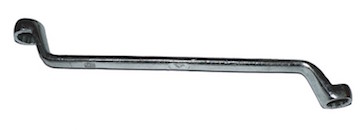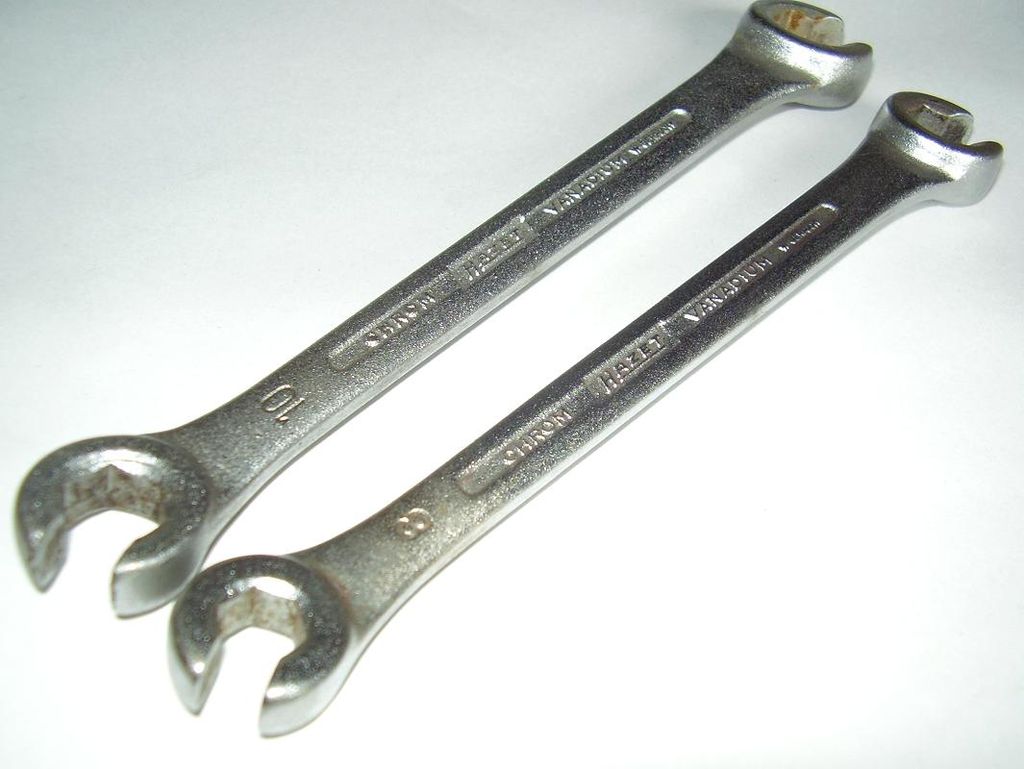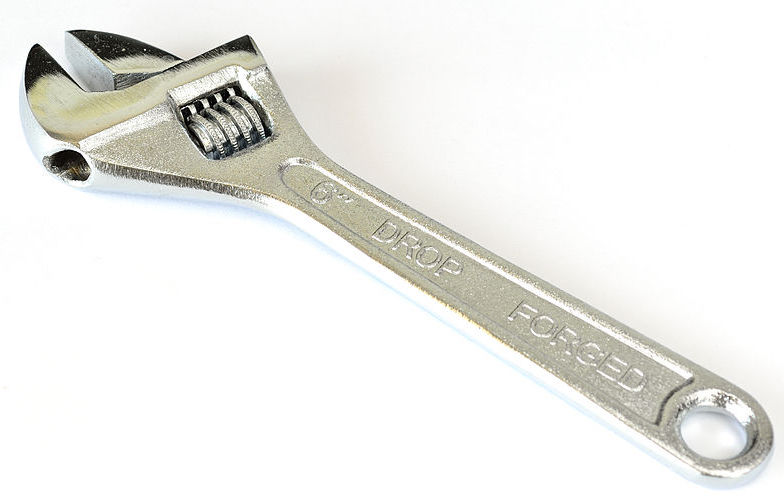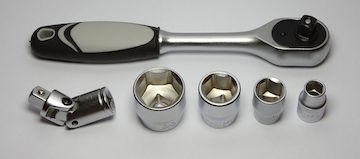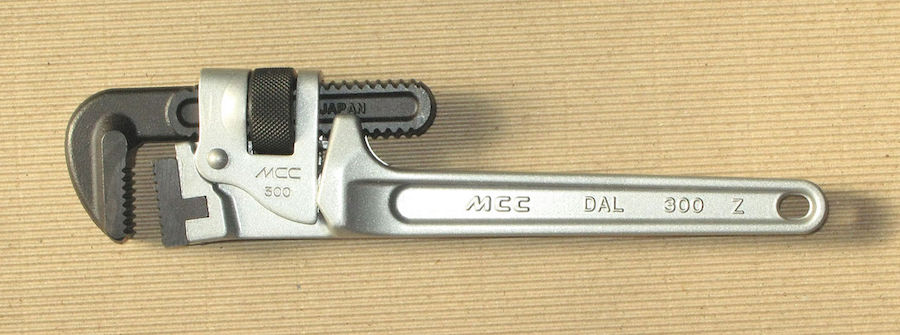Wrenches¶
Wrenches are used to amplify force through use of a lever to tighten of loosen nuts, bolts, pipes, and other threaded objects. There are many types (list), but here we will cover the non-speciality wrenches commonly used in prototyping, apparatus construction, and apparatus maintenance.
Types of Wrenches¶
- Open End Wrench - Open end wrenches fit around the faces of a nut or bolt head and are specified in the size of the opening in the jaw. You may also hear these called “open ended spanners”. They are easy to rapidly apply and remove, but can slip off and caused rounded bolt corners and skinned knuckles. You must use an open end wrench when the top and bottom of the fittings are inaccessible, such as tube fittings.
- Box End Wrench - These wrenches are completely closed, making them very secure on the nut/bolt being turned, but they can only be used when the top of the fitting can be accessed. When possible, use a box end wrench instead of the open ended. Box ended wrenches are commonly offset making their use easier in many situations.
- Combination Wrench - The combination wrench has both an open and box ended wrench of the same size on the same tool. This is the most common wrench in the toolbox and the most versatile. When equipping your shop, these should be one of the first purchases in both imperial and metric sizes.
- Flare Nut Wrench - The flare nut wrench solves the problem of tubing fitting accessibility faced by the box end wrench, while providing many of the same advantages. There is a slot in the end, allowing the wrench to pass over the tube, but still encircle the fitting to provide a positive purchase. The wrench is commonly much thicker than standard wrenches to distribute the tightening force over a larger surface area to reduce the risk of damage to pipe fittings, which are commonly made of soft metals.
- Adjustable Wrench - Often called the “Crescent wrench” after the brand name, this wrench is single handedly responsible for the destruction of more fasteners than any other tool in history. These wrenches have jaws offset from the handle about 15 degrees to help them work in close quarters. The jaw size can be adjusted with a worm gear drive to fit any nut size equally poorly. Tightening fasteners with adjustable wrenches requires careful adjustment to avoid the wrench slipping off the fastener, rounding the corners of the fastener, and making it difficult to tighten or remove. Only use adjustable wrenches when an appropriate fixed sized wrench is unavailable.
- Ratchet/Socket Wrench - Ratchet wrenches have a one-way mechanism, allowing rapid tightening/loosening of fittings with a near full range of motion. They are available in multiple “drive sizes” that describe the size of the square shaft used to transfer torque from the wrench to the tooling. Generally sockets are used on the end to tighten or loosen nuts/bolts. At high torques the ratchet mechanism can fail, but these are generally the quickest way to work on assemblies with access to the tops of the fasteners.
- Socket Accessories - There are a number of accessories for socket wrenches. Typical accessories that should be in the lab box are extensions that allow deep reach into cavities with the sockets, universal joints that allow the wrench and socket to operate at an angle to each other, and crow-foot tools that allow access to nuts/blots with limited clearance and no top access.
- Breaker Bar - This solid bar fits sockets of a fixed drive size and allows very tight torques to be applied without fear of stripping the ratcheting mechanism. These bars are often very large in diameter and long to provide extra mechanical advantage. When even more leverage is needed, users often slip an extra length of pipe over the handle to further extend it (a “cheater bar”). This practice is dangerous as it could case the drive to shear and all of the parts of the assembly to fall, possibly crushing hands or toes. The rapid release of energy can also cause head trauma if the user is in-line with the handle.
- Torque Wrench - This ratcheting handle has a mechanism to measure torque exerted. Generally these wrenches have a set-point after which the wrench will break-over indicating that the desired torque has been reached. Torquing fasteners to the proper specification is important for many precision assemblies. Wrenches that range from inch-pounds to hundreds of foot-pounds are commonly found in lab tool boxes.
- Pipe Wrench - These adjustable jaw wrenches strongly grip circular tubes when pulled towards the jaw opening, and release when pulled in the other direction. This makes it easy to rapidly tighten pipes. The teeth of the wrench generally mar the finish, but this is not considered as important as a tight connection for plumbing applications. Pipe wrenches are another often abused tool, used to tighten large nuts when the correct tooling is not available. Again, this is not recommended.
Use¶
Wrenches follow the same principle of “righty tighty, lefty loosey” as screwdrivers for right-handed threads. Socket wrenches have a lever to reverse their direction of operation.
Safety Precautions¶
Pinching and crushing hazards are the largest safety issues when using wrenches. If the tool slips off of the fastener, it is easy to skin, pinch, or crush your hands. Gloves may be worn during operation, but an engaged and attentive user is the best safety precaution. NEVER use a wrench for anything but its intended purpose, doing so will likely result in damage to the tool and you. Using the wrong tool is also far more likely to strip the fastener, which should be avoided. As mentioned above, extension bars are also not a good idea as they often over stress the tool.

